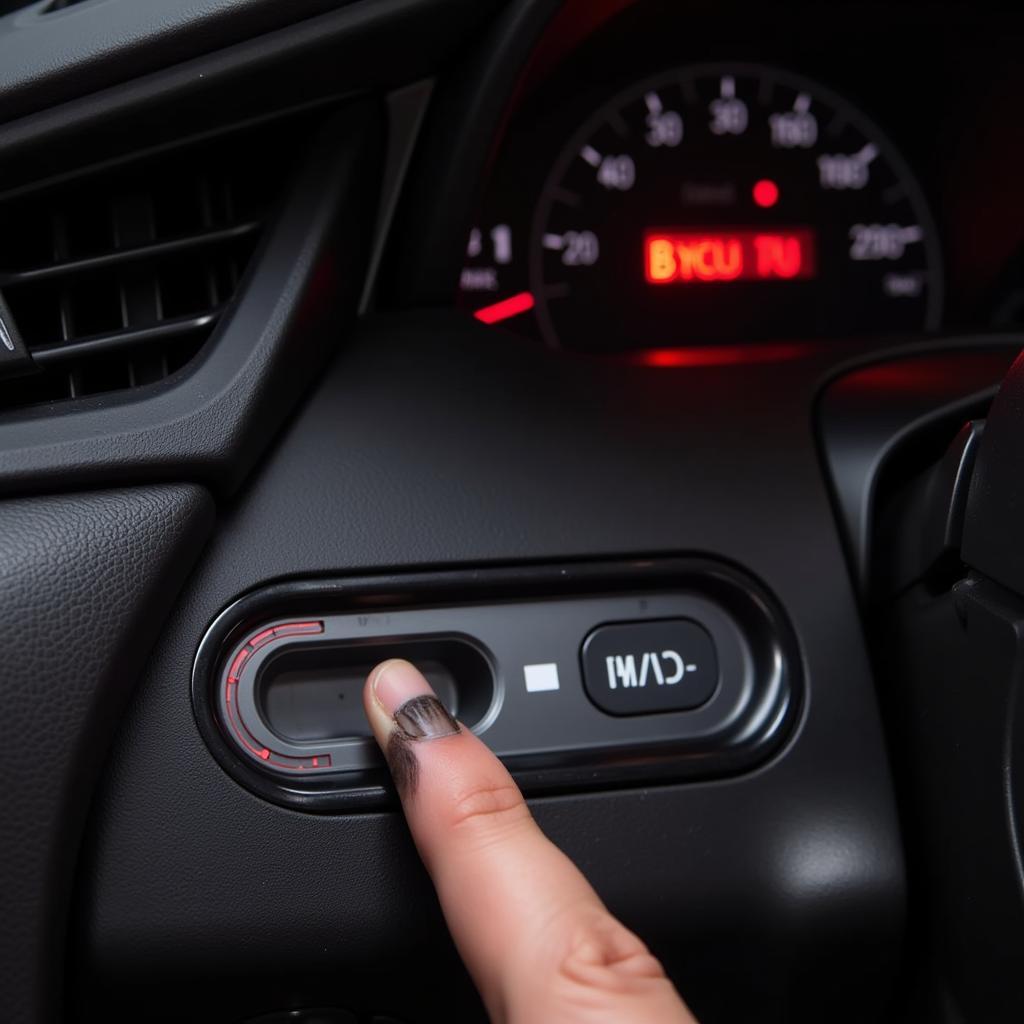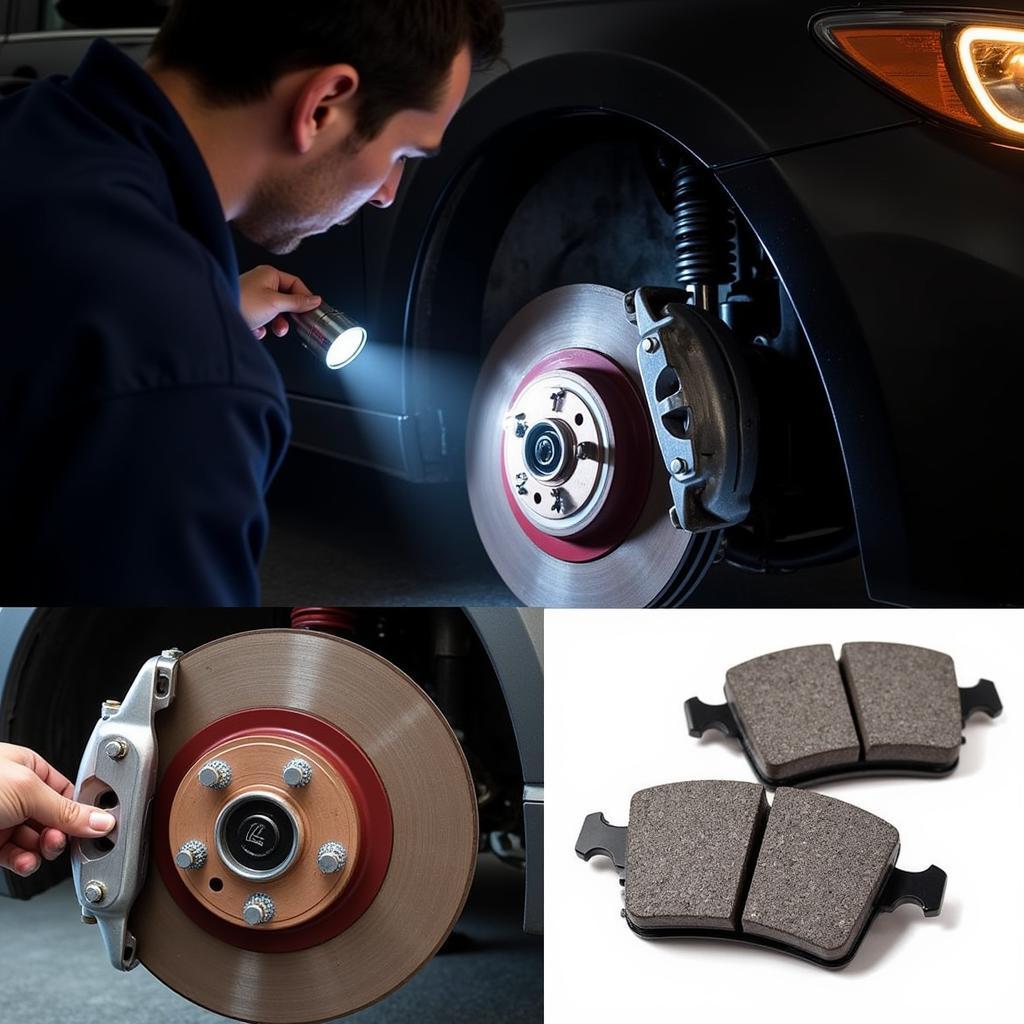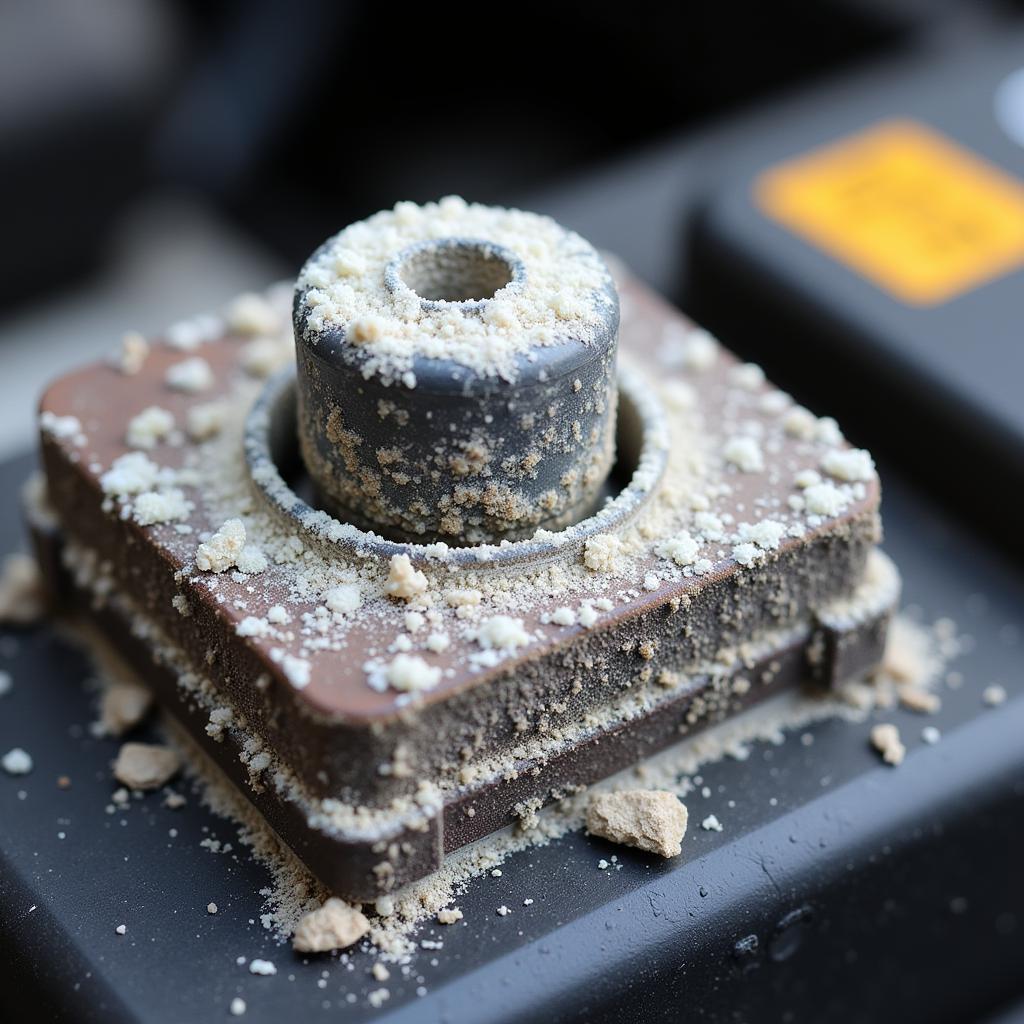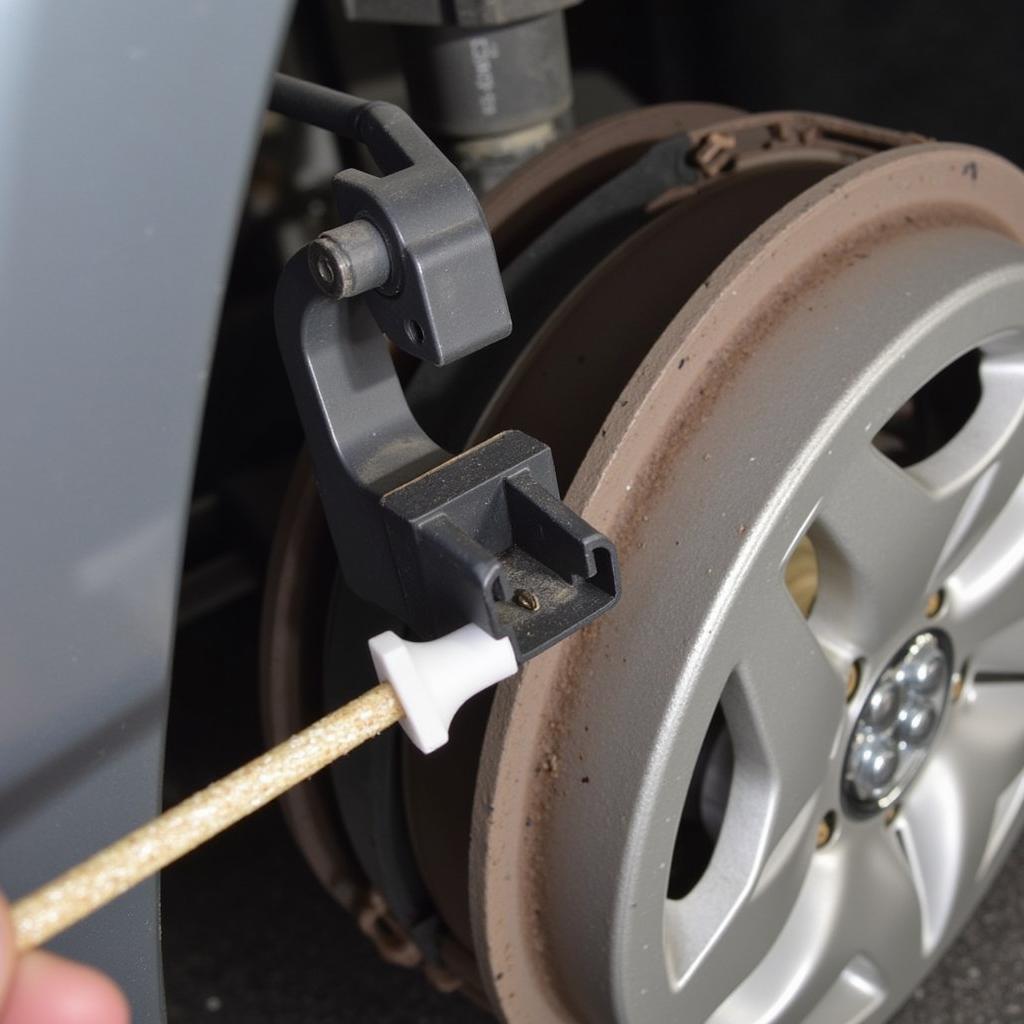The dreaded Honda brake system warning light – a glowing symbol on your dashboard that can signal anything from a simple fix to a more serious issue. Understanding what this warning light means and how to troubleshoot it can save you time, money, and potentially prevent a dangerous situation. This comprehensive guide will delve into the common causes of the Honda brake system warning, provide step-by-step troubleshooting instructions, and offer expert advice on how to address this issue effectively. brake system warning light honda
A Honda brake system warning light can illuminate for several reasons, ranging from low brake fluid to more complex problems with the anti-lock braking system (ABS). Ignoring this warning can lead to decreased braking performance and potentially compromise your safety on the road. This article aims to empower Honda owners with the knowledge they need to diagnose and address the brake system warning light, potentially avoiding costly repairs.
Common Causes of the Honda Brake System Warning Light
The Honda brake system warning light can be triggered by various issues. Here are some of the most common culprits:
- Low Brake Fluid: This is the most frequent cause. A leak in the brake lines, worn brake pads, or a faulty master cylinder can deplete brake fluid levels, triggering the warning light.
- Parking Brake Engaged: Sometimes, the simplest explanation is the correct one. Ensure the parking brake is fully disengaged.
- Faulty ABS System: A malfunctioning ABS system, including faulty sensors or control modules, can activate the warning light.
- Worn Brake Pads: As brake pads wear down, they can trigger a sensor that illuminates the warning light.
- Brake Fluid Leak: A leak anywhere in the brake system, from the lines to the calipers, can cause a drop in brake fluid and activate the warning light.
 Honda Brake System Warning Light – Low Brake Fluid
Honda Brake System Warning Light – Low Brake Fluid
Troubleshooting the Honda Brake System Warning Light
Here’s a step-by-step guide to help you troubleshoot the Honda brake system warning light:
- Check the Parking Brake: Make sure the parking brake is fully released. This often overlooked step can save you a trip to the mechanic.
- Inspect Brake Fluid Level: Open the hood and locate the brake fluid reservoir. Check the fluid level against the minimum and maximum markings. If the fluid is low, add the correct type of brake fluid recommended for your Honda model.
- Check for Leaks: Visually inspect the brake lines, calipers, and wheel cylinders for any signs of leakage. Look for wet spots or drips.
- Inspect Brake Pads: Check the thickness of your brake pads. If they appear thin or worn, they likely need replacement.
brake system warning light honda accord
When to Seek Professional Help
If you’ve checked the basics and the warning light persists, it’s time to seek professional assistance. A qualified mechanic can diagnose the issue using specialized diagnostic tools and perform the necessary repairs. Ignoring a persistent brake system warning light can lead to more serious and costly problems down the line.
Understanding the Importance of Timely Brake System Maintenance
Regular brake system maintenance is crucial for ensuring optimal braking performance and safety. This includes regular brake inspections, fluid flushes, and timely replacement of worn components.
 Honda Brake Pad Inspection
Honda Brake Pad Inspection
“Regular brake maintenance is not just about fixing problems; it’s about preventing them,” says John Smith, a certified automotive technician with over 20 years of experience. “Addressing brake issues early can save you money and ensure your safety on the road.”
honda brake system warning light honda pilot
Advanced Diagnostic Techniques for Honda Brake Systems
Modern Honda vehicles utilize sophisticated electronic brake systems. Diagnosing issues within these systems often requires specialized diagnostic equipment and software. Remote diagnostics and software updates are increasingly common in addressing complex brake system problems.
The Role of Remote Diagnostics and Software Updates
Remote diagnostics allow technicians to access vehicle data remotely, identify potential issues, and even perform software updates wirelessly. This can significantly reduce diagnostic time and improve the efficiency of repairs.
brake system warning light honda crv 2018
“Remote diagnostics and software updates have revolutionized the way we diagnose and repair modern brake systems,” adds Jane Doe, a leading expert in automotive diagnostics. “These technologies enable us to identify and address issues more quickly and accurately than ever before.”
honda crv brake system warning
Conclusion
The Honda brake system warning light is a crucial safety feature that should never be ignored. By understanding the common causes and following the troubleshooting steps outlined in this guide, you can effectively address many brake system issues. However, if the warning persists, seeking professional help is essential to ensure your safety and prevent further damage to your vehicle. Remember, regular maintenance is key to preventing brake system problems and ensuring optimal performance.


